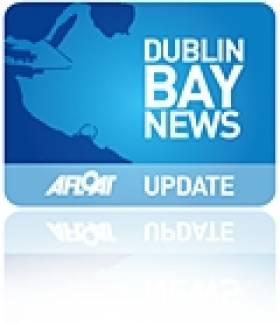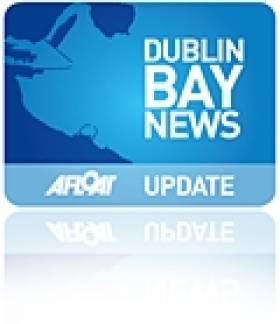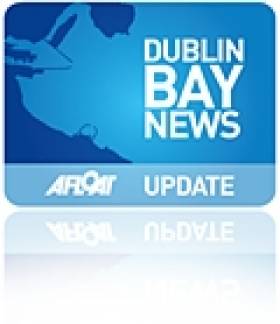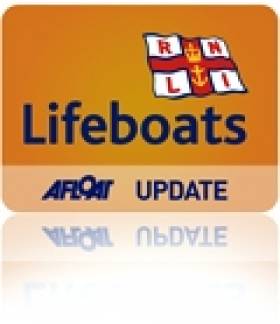Displaying items by tag: Dun Laoghaire
Diaspora Museum Plans Scrapped By Government
#diasporamuseum – The governement has altered course on plans for a national emigrant museum because it fears a backlash from rejected bidders ahead of the general election, according to a report into today's Sunday Business Post newspaper.
Inspite of a drawing up a plan to draw 300,000 visitors annually to a new national facility the government is now aiming at smaller regional museums instead.
Dun Laoghaire and Cork harbour were among sites considered in the plan. Both ports had advanced amibitious plans for a national diaspora project.
The Port of Cork's Company's Custom House and Bonded Warehouse buildings located along the city's central quays, were to be converted into a major €15m museum that will tell the story of Ireland's emigration.
In Dun Laoghaire on Dublin bay, port chief executive Gerry Dunne made the case for a diapora centre in the South Dublin port town at a gathering in the House of Lords in London in January 2013. The museum, to be located on the town's Carlisle Pier, forms a major part of the harbour's regeneration plan.
What Next For Dun Laoghaire After Stena Departure?
#DunLaoghaire - With the end of Stena's ferry service between Dun Laoghaire and Holyhead confirmed earlier this week, The Irish Times' Lorna Siggins gauges the mood in the south Dublin port that aims to transition from a commercial focus to a more diverse leisure hub.
Described as "the worst-kept secret on this coastline" by harbour user and dinghy sail trainer Alistair Rumball, Stena's decision to pull out of Dun Laoghaire is being seen as good news for the harbour company's master plan, with its emphasis on enticing cruise traffic, tourism and related facilities.
Among these are the planned diaspora centre, and the 'urban beach' project for the East Pier that was green-lit by planners late last year but is currently under appeal.
However, local TD Richard Boyd-Barrett argues that the move only opens the way for "back-door privatisation” of the harbour. And even our own WM Nixon wondered earlier this year about the scale of the master plan's ambition, and whether Dun Laoghaire has lost the plot.
The Irish Times has much more on the story HERE.
Dun Laoghaire Harbour Seeks Seasonal Ferry Service Operator from Dun Laoghaire to Holyhead
#stenaoutofdunlaoghaire – Following the news that Stena has decided not to resume its Dun Laoghaire Harbour Seasonal Ferry Service. Dun Laoghaire Harbour Company Ltd (DLHC) is seeking expressions of Interest are now being sought by the Dun Laoghaire Harbour Company from suitable providers to operate a seasonal ferry service on the Dun Laoghaire to Holyhead route.
A ferry service has been running between Dun Laoghaire and Holyhead for over 170 years (since 1835). A small fast craft was introduced to the route in 1993 which was replaced by the world's largest fast craft, the HSS, in 1995. Stena Line, the operator of the ferry service, decided not to resume service on this route this week. As a result, a berth has become available in Dun Laoghaire for a new ferry service.
The full advert for the new operator is here
DMYC Frostbite Dinghy Racing Cancelled Again Due to Strong Winds
#dmycfrostbites – With both XCWeather and Windfinder forecasts suggesting similar conditions for 15:00, northerly winds of 20 knots with gust to 27/28 knots, air temperatures of 5/6˚, but, ironically sunny conditions, the organisers of today's DMYC Frostbites pulled the plug on the Dun Laoghaire dinghy racing series writes Cormac Bradley. N over A flies from the DMYC flagpole for yet another week!
Dun Laoghaire 'Urban Beach' Faces Fresh Planning Objection
#DunLaoghaire - Despite getting the green light from planners six weeks ago, Dun Laoghaire's 'urban beach' project faces an appeal made against it to An Bórd Pleanála.
According to The Irish Times, councillors in Dun Laoghaire-Rathdown have been told of an appeal lodged in late December against the €2.5 million scheme modelled on Berlin's famous Badeschiff.
It has not been made known who made the appeal, though the original planning application received 15 objections during the public consultation from local groups and individuals.
Many of these expressed concern at potential damage to the protected East Pier where the Badeschiff would be installed, and also argued for council funds to be instead directed towards restoration of the derelict Victorian Baths nearby.
The Irish Times has more on the story HERE.
Fireball Frostbites Blown Out at Dun Laoghaire Harbour, Fireballers Race For Tasar World Title
#fireball – It will come as little surprise that yesterday's Frostbite racing at Dun Laoghaire was abandoned early in the day. While the sea state inside and outside the harbour weren't excessive, due to the Dun Laoghaire shoreline being the leeward shore, the wind conditions were severe and very gusty.
However, in warmers climes, a number of Fireballers have just concluded a Tasar World Championships in Australia, with commendable results.
In addition to 11th place overall, in a fleet of 122 boats, Heather picked up the Australian First Female Trophy (Highest placed woman helm).
On Saturday past, current Fireball World and European Champion, Tom Gillard and European Champion crew, Richard Anderton, won a "howling" Bloody Mary event in the UK.
And while the UK and Ireland is in the grip of high winds and the prospect of very low temperatures tomorrow (Tuesday), another regatta in warmer climes is being promoted inFacebook posts.
The Fireball North American Championships will be sailed as part of the 50th Anniversary North American Mid-Winters at Davis Island Yacht Club in Tampa, Florida, in mid March, 13th- 15th(for the Fireballs). They are also expecting some European involvement with a promise of two European Teams taking the roll-on-roll-off from Southampton to Florida and a Swiss crew have also made a commitment to the event.
The advice is that there is a substantial late entry fee for registration after January 31st, so if six days of Floridian sunshine is something that you can contemplate...........get cracking!
|
2015 Geographe Bay Tasar Worlds, Busselton, Western Australia. |
R1 |
R2 |
R3 |
R4 |
R5 |
R6 |
R7 |
R8 |
R9 |
Total (2 discards) |
|
|
11th |
Heather Macfarlane & Chris Payne |
25 |
4 |
4 |
16 |
12 |
17 |
5 |
15 |
9 |
65pts |
|
20th |
Conor Byrne & Michelle Mackie |
32 |
25 |
22 |
7 |
39 |
15 |
20 |
49 |
23 |
144pts |
|
23rd |
Ben Schulz & Cameron Philcox |
53 |
17 |
28 |
31 |
26 |
21 |
16 |
35 |
19 |
158pts
|
#rnli – The crew of the RNLI lifeboat station at Dun Laoghaire on Dublin Bay will hold their annual ceremony to remember the 15 volunteers that died on service in 1895 on Christmas Eve as well as all those who lost their lives around our coasts in 2014. Families are especially welcome to attend this long-standing local tradition of remembrance.
The short ceremony will take place at mid-day on Christmas Eve at the lighthouse end of Dun Laoghaire's popular East Pier and will include music, an ecumenical blessing, a contemporary newspaper account of the 1895 tragedy and a piped lament.
Both RNLI lifeboats stationed at Dun Laoghaire will launch and the crews will lay wreaths at sea close to the pier.
The ceremony is a long-standing Christmas Eve tradition that remembers the lives of the 15 volunteer crew that died when their lifeboat capsized in gale force winds while attempting to rescue those on board the SS Palme that had run aground off Blackrock, Co. Dublin. All lives lost at sea will also be included in the ceremony.
Relatives of the original 1895 lifeboat crew are expected to be amongst those who will walk the pier for the 20-minute ceremony. Musician William Byrne and journalist Fergal Keane will be joined by a lone piper on the East Pier lighthouse battery during the short ceremony that has been facilitated by the Dun Laoghaire Harbour Company. In case of inclement weather, an alternative ceremony will still be held closer to the lifeboat station.
Volvo Dun Laoghaire Regatta 2015 Signs Up UK Entries
#vdlr – Up to 15 entries have already been received for what is expected to be Ireland's biggest sailing event in 2015. Among the early entries for Volvo Dun Laoghaire Regatta (VDLR) is a number of Scottish, English and Northern Ireland boats that responded almost immediately to the online publication of the July regatta's Notice of Race.
Among the first was Clyde Cruising Club's Wildebeest V skippered by Craig Latimer. Fairlie Yacht Club's MAT 1010 Now or Never 3 sailed by Neill Sandford is also in for VDLR 2015.
Class bands have yet to be set for cruiser classes but already expressions of interest received at Dun Laoghaire Race HQ indicate a strong take up from overseas entries for the 2015 biennial, organised by all four Dun Laoghaire waterfront yacht clubs.
Other boats that have expressed interest or already entered are Stuart Cranston's Sigma 35
from Down Cruising Club. The GBR registered Beneteau First 36.7, Animal skippered by Kevin Aiken is coming and so is the Élan 333, Movistar Bleu from Killyleagh under Raymond Killops. Guy Cowper's Stratisfear, a Corby 36, from Royal Dee is also heading west for Dun Laoghaire.
At this early stage, as Afloat.ie reported earlier, the following events have also been confirmed as part of the Volvo Dun Laoghaire Regatta line–up.
• Royal Dee Irish Sea Offshore Challenge
• J109 Irish National
Championship
• RS Elite Irish National
Championship
• Beneteau First 21 Irish
Championship
• Wayfarer Irish National
Championship
• GP 14 Leinster Championship
• J24 Leinster Championship
DLRCoCo Staff Donate HUG Funds to RNLI Dun Laoghaire
#rnli – The Staff of Dun Laoghaire Rathdown County Council (DLRCC) selected Dun Laoghaire RNLI lifeboat as the beneficiary of the 2014 Hope You Give (HUG) charity fund paid into over the year by the staff of DLRCC.
Above, Mary Kennefick, representing HUG (pictured left), presented the donation to Mark McGibney, RNLI Coxswain with Rita O'Reilly, Honorary Secretary of the RNLI Dun Laoghaire fundraising branch and Barry Keane, Vice Chairman.
Dún Laoghaire Harbour Company Welcomes Planning Permission for Urban Beach Project
#urbanbeach – Dún Laoghaire Harbour Company (DLHC) has welcomed the award of planning permission for its proposal for a floating swimming pool and urban beach at the historic East Pier of the Harbour. Permission was granted by Dún Laoghaire Rathdown County Council in recent days.
The project has been inspired by the popular Badeschiff facility in Berlin, a floating swimming pool on the River Spree. The plan for Dún Laoghaire Harbour includes a floating swimming pool containing heated and treated seawater, utilising a converted river barge which will be located within the Harbour. The facility will include an Urban Beach alongside the floating structure, on Berth 1 adjacent to the East Pier. Changing and toilet facilities, a café, an administration area, and security features are also planned.
The Harbour Company estimates that urban beach has the potential to attract 140,000 visitors per annum and to generate over €1 million per annum for the local economy.
Dún Laoghaire Harbour Company hopes to be in a position to open the facility for the summer season in 2016.
According to Gerry Dunne, CEO of DLHC: "The granting of planning permission by Dún Laoghaire Rathdown County Council is very welcome, and marks a vital step in realising the full potential of the Harbour as a marine, leisure and tourist destination of international calibre."
"Further to extensive consultation, Dún Laoghaire Harbour Company published a very exciting Masterplan in 2011. The urban beach, coupled with plans for enhanced cruise berthing facilities and the development of a world-class diaspora centre, formed the corner-stone of this plan. The ambitions for the Harbour are very much in-keeping with the Government's National Ports Policy to designate Dún Laoghaire as a harbour focusing on marine leisure, marine tourism, and urban development. Therefore, we are delighted to receive planning permission for the beach allows us to follow through on our mandate."
In recent months, Dún Laoghaire Harbour Company has had great success in marketing the Harbour as a destination for cruise calls. In 2015, it is estimated that Dun Laoghaire will attract c100, 000 cruise passengers and crew. A planning application under the Strategic Infrastructure Development Act for a new cruise berth for 'next generation' cruise ship is expected to be submitted in the coming weeks to An Bord Pleanála





































































